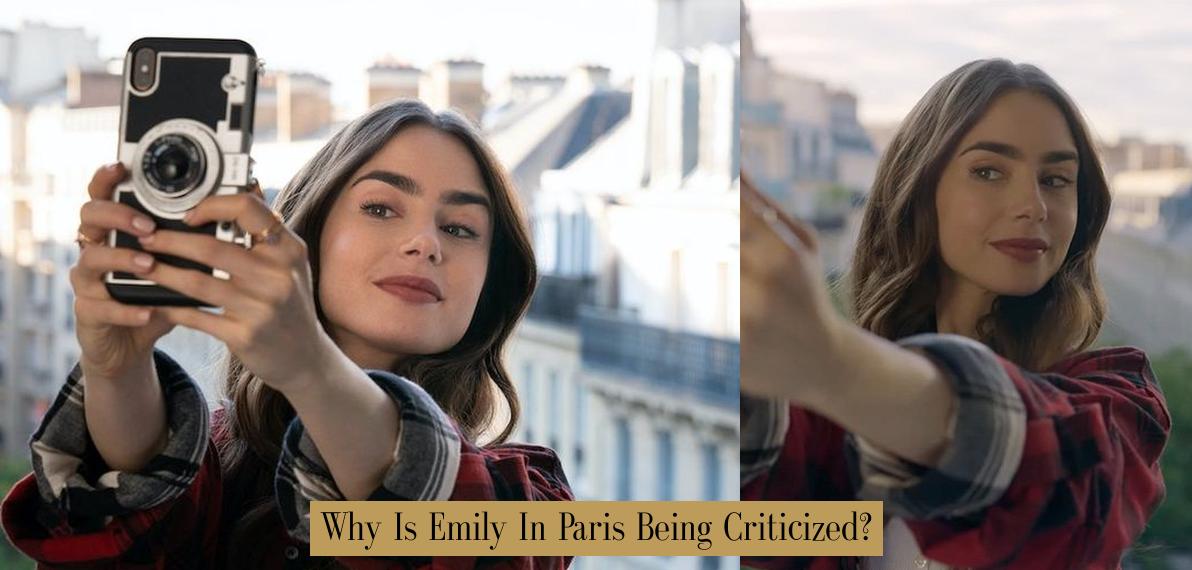Why Is Emily in Paris Being Criticized? A Deep Dive into the Netflix Phenomenon
“Emily in Paris,” the show that’s about as subtle as a French pastry explosion, has become a cultural phenomenon, albeit one that seems to attract as much vitriol as adoration. So, what’s the deal with all the hate? Why is everyone suddenly throwing croissants at the screen?
Well, folks, it’s a bit more complicated than just a bad case of “French envy.” This show, with its sugary-sweet aesthetic and plotlines that are about as realistic as a unicorn riding a baguette, has stirred up a hornet’s nest of criticism, leaving many viewers scratching their heads and wondering, “What’s the fuss?”
The Problem with Stereotypes:
Let’s start with the elephant in the room: the show’s portrayal of Paris and the French. It’s a caricature, a tourist trap of a show that seems to have been written by someone who’s only seen Paris through a rose-tinted Instagram filter. The French characters are either aloof and sophisticated or comically outlandish, while the city itself is a pristine, sun-drenched playground for Emily’s whirlwind adventures.
But here’s the thing: real life in Paris is far more diverse and nuanced. It’s a city where the chic boutiques sit alongside greasy spoons, where the romance is often tinged with practicality, and where the locals are just as likely to be wearing sweatpants as designer dresses. The show’s depiction of Paris feels like a Disneyfied version of reality, a place where everyone speaks perfect English and the only struggle is choosing which Parisian café to sip your espresso in.
The American Girl in Paris: A Clash of Cultures?
Then there’s Emily herself, a walking, talking cliché of the American abroad. She’s wide-eyed, naive, and blissfully unaware of the cultural faux pas she commits with alarming frequency. Her constant gaffes, from mistaking “bonjour” for “bonjourno” to attempting to speak French in a sing-song, Disney-princess voice, have become a source of amusement (and annoyance) for viewers, both French and American.
The show’s critics argue that Emily’s character perpetuates a harmful stereotype of Americans as arrogant, clueless, and culturally insensitive. They see her as a symbol of American exceptionalism, someone who believes that her American ways are superior and that she can easily navigate a new culture without any effort or understanding.
Beyond the Stereotypes: The Show’s Other Sins
But the criticism doesn’t end there. “Emily in Paris” has also been slammed for its unrealistic portrayal of the fashion industry, its lack of depth and substance, and its overall superficiality.
The writing is often criticized for being predictable, cliché-ridden, and lacking any real emotional resonance. The characters, beyond Emily, are often one-dimensional and serve primarily as plot devices to move the story along. The show’s obsession with romantic entanglements feels forced and contrived, with the love triangles and dramatic breakups playing out like a predictable soap opera.
So, Is “Emily in Paris” Really That Bad?
Now, before you start throwing your baguettes at the screen, let’s acknowledge that “Emily in Paris” isn’t all bad. It’s escapist, lighthearted, and visually stunning. The wardrobe alone is enough to inspire a thousand Pinterest boards. It’s the kind of show you can binge-watch on a rainy afternoon, a guilty pleasure that doesn’t require much brainpower.
The show’s creators have acknowledged the criticism and have tried to address some of the issues in the second season. They’ve introduced more diverse characters, explored more complex themes, and even given Emily a bit more depth. However, the show’s core elements remain intact, and it’s still very much a guilty pleasure, a candy-coated fantasy that doesn’t necessarily aim to be a realistic portrayal of life in Paris.
The Bottom Line: It’s All About Perspective
Ultimately, “Emily in Paris” is a show that’s designed to be consumed with a healthy dose of skepticism and a pinch of salt. It’s not a show that’s trying to be profound or groundbreaking. It’s simply trying to entertain, and in that regard, it often succeeds.
So, if you’re looking for a show that will challenge your worldview or offer deep insights into the human condition, “Emily in Paris” probably isn’t for you. But if you’re looking for a fun, escapist show that’s visually appealing and easy to digest, then you might just find yourself getting swept up in its whirlwind romance and Parisian charm.
Just be sure to keep your expectations in check, and don’t be afraid to indulge in a little healthy dose of sarcasm and critique. After all, even a show this lighthearted can’t escape the scrutiny of its viewers. And who knows, maybe with enough criticism, “Emily in Paris” will eventually evolve into something more nuanced and thought-provoking. But for now, let’s just enjoy it for what it is: a guilty pleasure that’s about as realistic as a talking croissant.
Here are some of the key takeaways from this discussion:
- Emily in Paris is criticized for its portrayal of Paris and the French, which many find stereotypical and unrealistic.
- The show’s depiction of Emily herself is also seen as problematic, perpetuating stereotypes about Americans abroad.
- Beyond the cultural stereotypes, critics also point to the show’s lack of depth, substance, and overall superficiality.
- Despite the criticism, Emily in Paris remains a popular show, offering escapist entertainment and a visually appealing setting.
- Ultimately, the show’s success hinges on perspective. Viewers who are looking for a realistic portrayal of life in Paris or a deeply thought-provoking show will likely be disappointed. However, those who are willing to embrace its lighthearted nature and its candy-coated fantasy may find themselves enjoying the ride.
Remember, the key to enjoying any show is to approach it with a healthy dose of skepticism and a pinch of salt. And if you’re going to throw a croissant at the screen, make sure it’s a fresh one!
